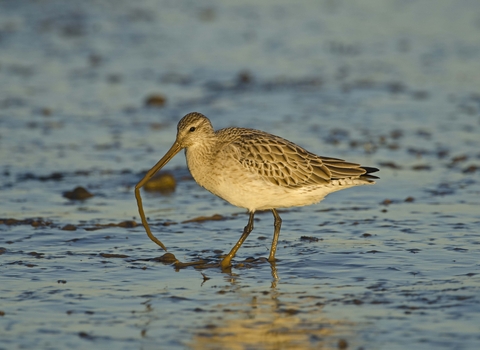
Bar-tailed godwit feeding on ragworm ©David Tipling/2020VISION
Bar-tailed godwit
The bar-tailed godwit winters in the UK in the thousands; look for it around estuaries like the Thames and Humber. In spring, the males display arresting breeding plumage, with brick-red heads, necks and chests.
Scientific name
Limosa lapponicaWhen to see
July to AprilTop facts
Category
Stats
Length: 33-42cmWingspan: 75cm
Weight: 300-370g
Average lifespan: 5 years
Classified in the UK as Amber under the Birds of Conservation Concern 5: the Red List for Birds (2021). Listed as Near Threatened on the global IUCN Red List of Threatened Species.
